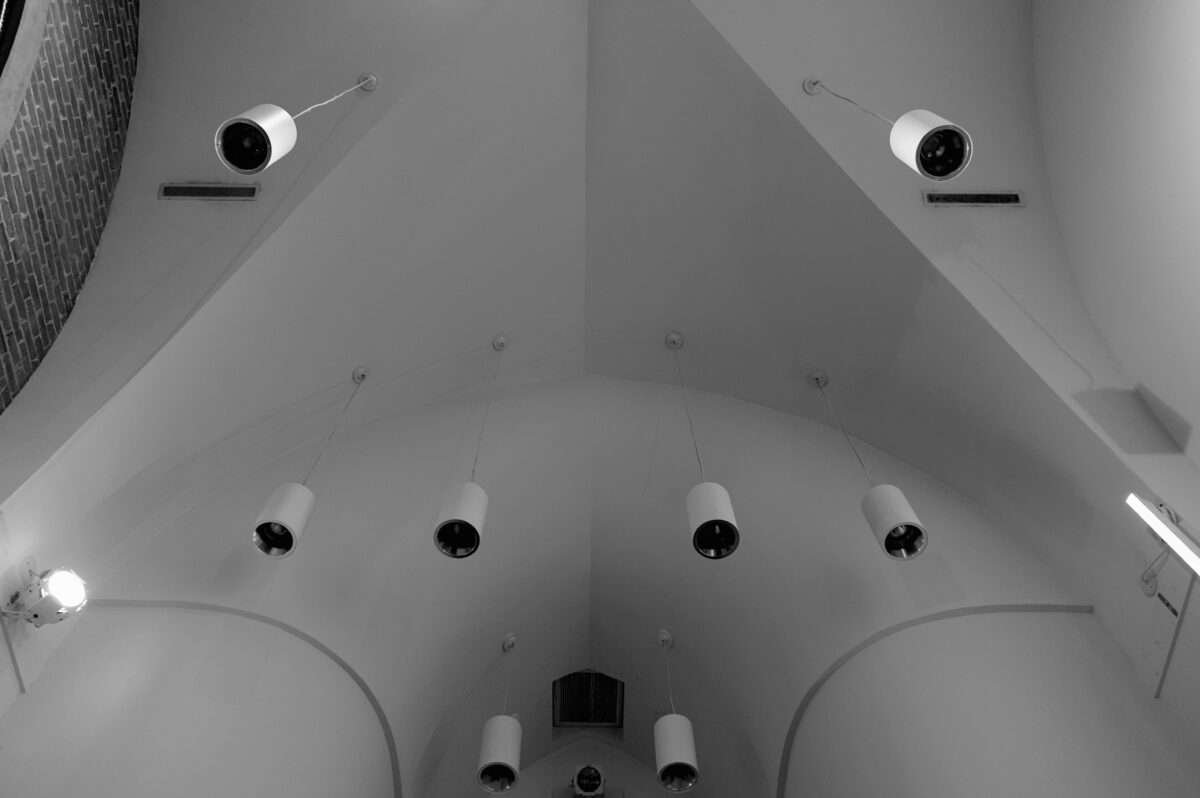The structures that dot city skylines and rural horizons tell stories of their own, echoing the historical and spiritual passages that have shaped the human experience. Few architectural genres whisper narratives as enduring and profound as church architecture. For leaders and shepherds of faith communities, understanding the intertwining tapestry of religion, culture, and construction is not only a historical exercise but also a strategic tool in shaping their worship services for their congregation.
In a divine dance with time, this post will escort you through the hallowed halls of church architecture, from the origins woven into the fabric of ancient religion to the cutting-edge technology that paves the way for the future of faith structures.

Unveiling the Pillars of Church Construction
What was, for many centuries, the most prominent and grandest construction in a community? The Church. And for good reason. Church architecture embodies charitable values and outreach, a purpose greater than oneself, and a spiritual marker of hope and acceptance. Its very blueprint was a map of spiritual, social, and even political ambition.
In the early days of Christianity, congregations met in small domestic spaces, their architecture reflecting humility and secrecy, but born from the necessity to avoid persecution. These locations lacked the grandeur—yet not the heart—of modern churches. The revolution began with Emperor Constantine’s Edict of Milan in 313 AD, which ended the persecution of Christians and created the opportunity for the construction of larger and more elaborate church buildings.
The Rise of Romanesque and Gothic in church architecture
The subsequent centuries saw the birth of two predominant styles—the Romanesque and the Gothic. The former, with its thick walls, rounded arches, and sturdy construction, reflected a stout and fortified faith. The latter, with its soaring spires, pointed arches, and ribbed vaults, aspired heavenward.
This shift was not simply a matter of aesthetics; it was a response to a growing complexity within Christian theology. The ‘us and them’ of the Romanesque made way for inclusiveness and lightness in the Gothic style, echoing the inclusive nature of God’s Kingdom. Church architecture was, in essence, a visual sermon, an edifice designed to include and uplift.
The Reformation and Aftermath
The Reformation, ignited in the 16th century, marked a significant turning point not only in religious practice but also in church architecture. This era heralded a shift towards simplicity and functionality in ecclesiastical buildings, mirroring the Protestant emphasis on the Word rather than the spectacle.
Ornate decorations and the grand, ethereal spaces characteristic of Gothic architecture gave way to more steely interiors focused on accommodating the congregation’s need to hear and engage with the sermon. Architectural elements such as pulpits became more pronounced, reflecting the importance of the preached Word.
This period didn’t just alter the spiritual landscape; it redefined the architectural vernacular of sacred spaces, stripping away layers of adornment to simmer down to the essence of faith and communal worship.
The Tapestry of Transformations
Just as in life, church architecture has grown and shifted. Each transformation not only reimagined the physical space but also redefined the spiritual direction of the communities these structures served.
The unfolding of church architecture reflected the changing tides of religious and societal values.
From the solemn Romanesque to the transcendent Gothic, each style served as a testament to the era it represented. The Renaissance period introduced a revival of classical antiquity, with architects like Brunelleschi and Michelangelo blending ancient Greek and Roman architectural principles with Christian symbolism, leading to structures that emphasized harmony, proportion, and a reinvigorated focus on the human experience of the divine.
The Baroque period followed, reacting to the simplicity of the Reformation with extravagance and opulence. Churches of this era aimed to inspire awe and devotion through grandiosity and dramatic use of light, art, and architecture to captivate the senses and direct the gaze heavenward.
The advent of modernity and the Industrial Revolution introduced materials such as steel and concrete, allowing for the development of the Modern and Contemporary styles. These periods strived for simplicity and functionality, often incorporating minimalist aesthetics and new technologies to create spaces that reflected the changing dynamics of faith in the modern world.
Each architectural style in the evolution of church buildings encapsulates a unique dialogue between the divine and the human, housing the spiritual culture of its time through stone, glass, and mortar.
Elements of Church Architecture
At the heart of church architecture lies the sanctuary, a sacred space that is both the focal point and spiritual center of a church. The sanctuary is the stage for the church’s most sacred practices and ceremonies—communion, weddings, and baptisms—events that define and deepen the faith of the congregation.
The importance of the sanctuary in church architecture cannot be overstressed. It is not merely a space for spiritual disciplines but houses expressions of worship and connection with Christ. Its design, whether simple or elaborate, serves to focus the minds and hearts of believers on the greatness of God and spur them into active faith and life integration.
Church windows are more than mere architectural elements; they have served throughout history as a symbol of significance amongst functionality. The advancement of window designs in church architecture has been particularly noteworthy, from the small, modest openings of early Romanesque churches to the grand, colorful stained glass windows that became hallmarks of the Gothic style. These windows served not only to illuminate the interior spaces with natural light but also to educate and inspire the congregation through biblical stories and spiritual role models depicted in vibrant colors and intricate designs.
The artistry involved in stained glass windows reflects a deep understanding of craftsmanship and theology, making them critical in the overall aesthetic and spiritual experience of church architecture. Through the ages, church windows have continued to change, yet their role in enhancing the sacredness and beauty of the church remains unchanged.

The Impact of Technology on Church Architecture
In the contemporary era, technology has significantly influenced the functionality and aesthetic of church architecture, seamlessly integrating with traditional elements to serve modern congregational needs. The use of advanced projection systems to display song lyrics and liturgical texts has become common, allowing members to engage more actively in services. This not only enhances communal participation but also bridges the gap between traditional and contemporary worship practices. Similarly, the advent of broadcasting technologies has allowed church services to reach a global audience, inviting people everywhere to have access to worship and spiritual teachings.
Churches equipped with live streaming capabilities can connect with members who are unable to attend in person, thus expanding their community beyond proximity limitations. Lighting technology, too, plays a crucial role in creating an atmosphere conducive to worship.
Sophisticated lighting systems can accentuate architectural features, set the mood for different parts of the service, and focus attention on the sanctuary. This blend of ancient architecture and modern technology enriches the worship experience, demonstrating the church’s ability to adapt and thrive in the digital age.
Modern Trends in Church Architecture: Lobbies and Flexible Spaces
In recent years, a significant trend in church architecture has been the emphasis on creating large, welcoming lobbies and flexible, multipurpose spaces. These areas often feature expansive use of glass to flood the interiors with bright natural light, fostering an atmosphere of warmth and openness.
The modern church lobby serves as a communal hub, encouraging interaction and connection among congregants before and after services. Equipped with comfortable seating, coffee stations, and sometimes bookshops or information stands, these lobbies are designed to be inviting and conducive to casual conversations, strengthening community bonds.
Equally important is the trend towards flexible spaces within the church, which can be adapted for various functions such as group meetings, social events, and educational purposes. Movable walls, reconfigurable seating, and advanced audio-visual systems allow these spaces to be transformed according to the needs of the moment, reflecting the dynamic nature of community engagement. These architectural innovations demonstrate a deliberate shift towards making churches more accessible, inclusive, and relevant to contemporary society.
In conclusion, the shifts and trends in church architecture serve as a testament to the church’s desire to meet the changing needs of congregations and communities.
From the hallowed sanctuaries and stained glass artistry of the past to the modern innovations of flexible spaces and integrated technology, every architectural element is designed with intentionality to foster a deeper connection with the Lord.
For any community looking to build or redesign a worship space that honors tradition while embracing the needs of today’s worshippers, it’s crucial to partner with mission-minded architects who understand this delicate balance. Keiser Design Group specializes in creating intentional worship spaces that resonate with both the spiritual and practical aspirations of your community. By prioritizing inclusivity, flexibility, and technological integration, we strive to design environments that encourage engagement, reflection, and connection.
If your congregation is growing, contact Keiser Design Group today. Together, we can craft a worship space that includes your surrounding community and meets them where they are.


